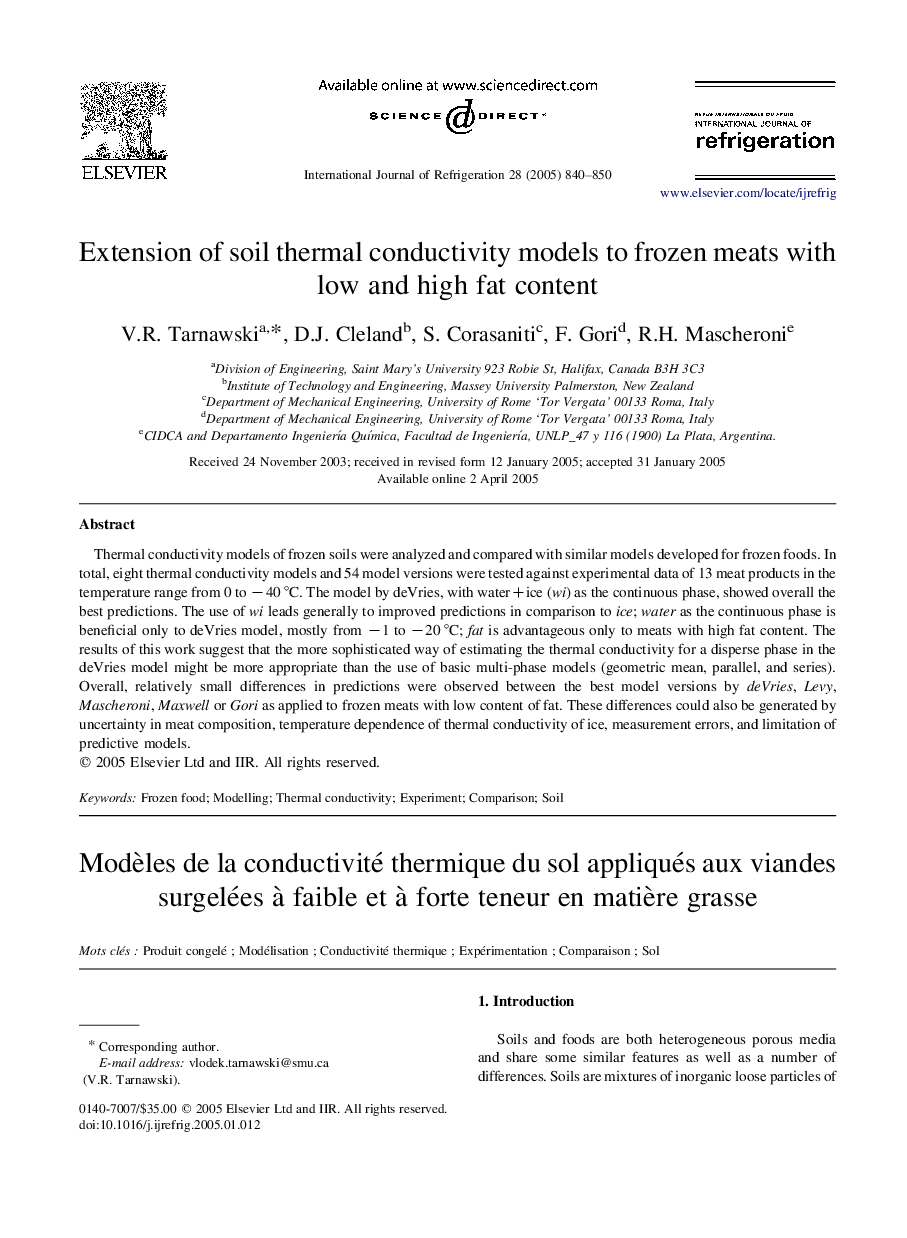| Article ID | Journal | Published Year | Pages | File Type |
|---|---|---|---|---|
| 9708167 | International Journal of Refrigeration | 2005 | 11 Pages |
Abstract
Thermal conductivity models of frozen soils were analyzed and compared with similar models developed for frozen foods. In total, eight thermal conductivity models and 54 model versions were tested against experimental data of 13 meat products in the temperature range from 0 to â40 °C. The model by deVries, with water+ice (wi) as the continuous phase, showed overall the best predictions. The use of wi leads generally to improved predictions in comparison to ice; water as the continuous phase is beneficial only to deVries model, mostly from â1 to â20 °C; fat is advantageous only to meats with high fat content. The results of this work suggest that the more sophisticated way of estimating the thermal conductivity for a disperse phase in the deVries model might be more appropriate than the use of basic multi-phase models (geometric mean, parallel, and series). Overall, relatively small differences in predictions were observed between the best model versions by deVries, Levy, Mascheroni, Maxwell or Gori as applied to frozen meats with low content of fat. These differences could also be generated by uncertainty in meat composition, temperature dependence of thermal conductivity of ice, measurement errors, and limitation of predictive models.
Keywords
Related Topics
Physical Sciences and Engineering
Engineering
Mechanical Engineering
Authors
V.R. Tarnawski, D.J. Cleland, S. Corasaniti, F. Gori, R.H. Mascheroni,
